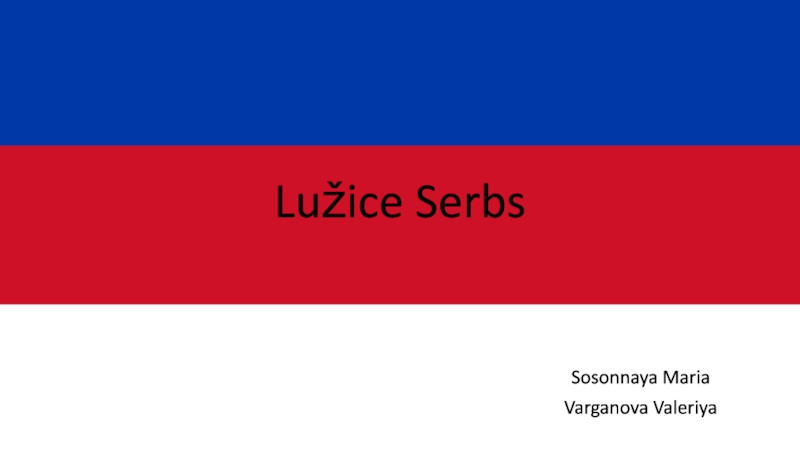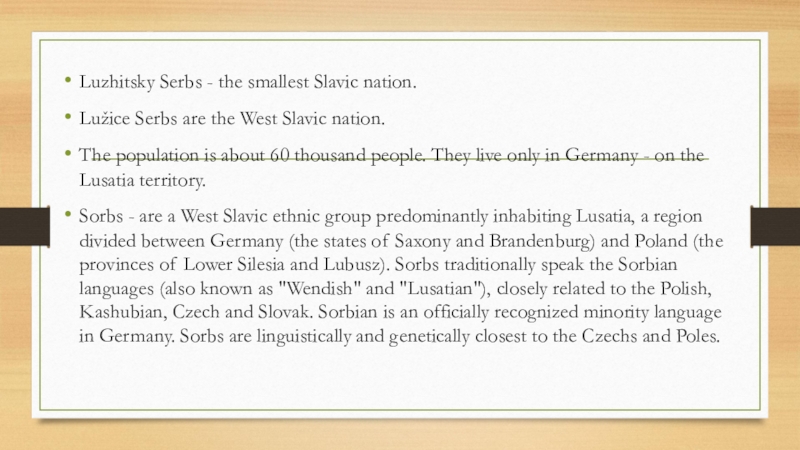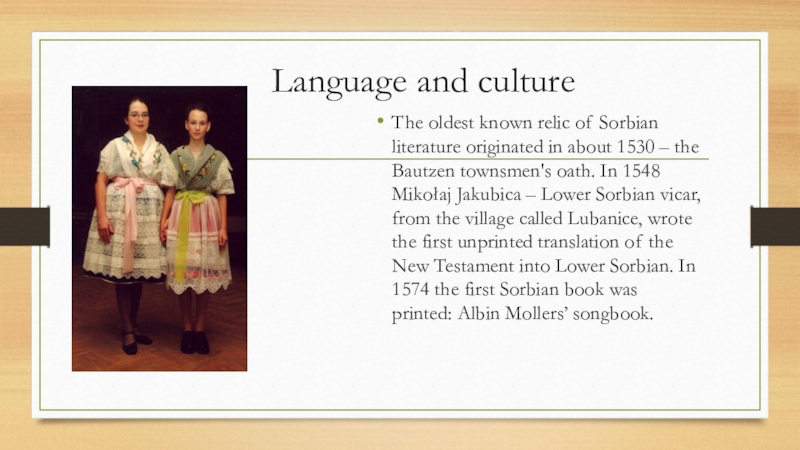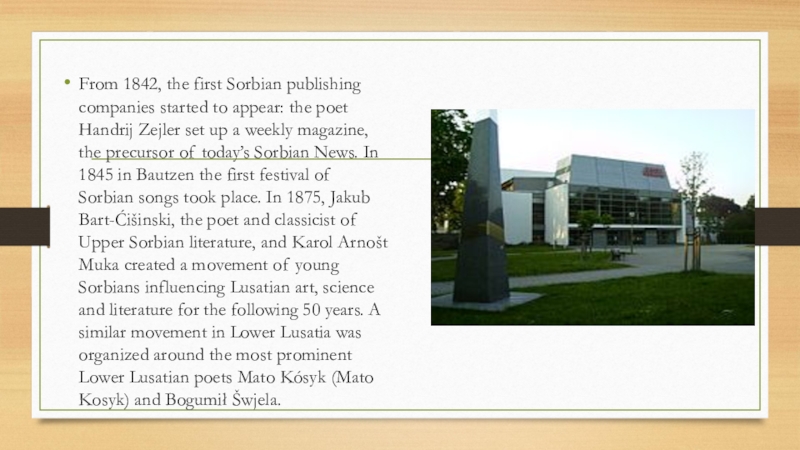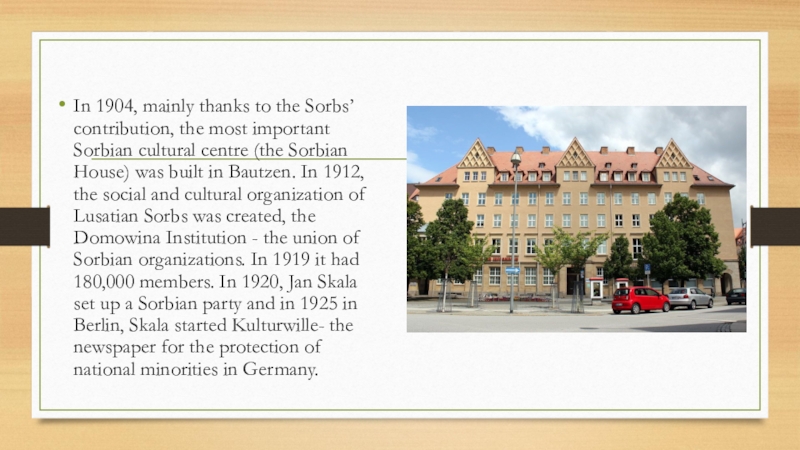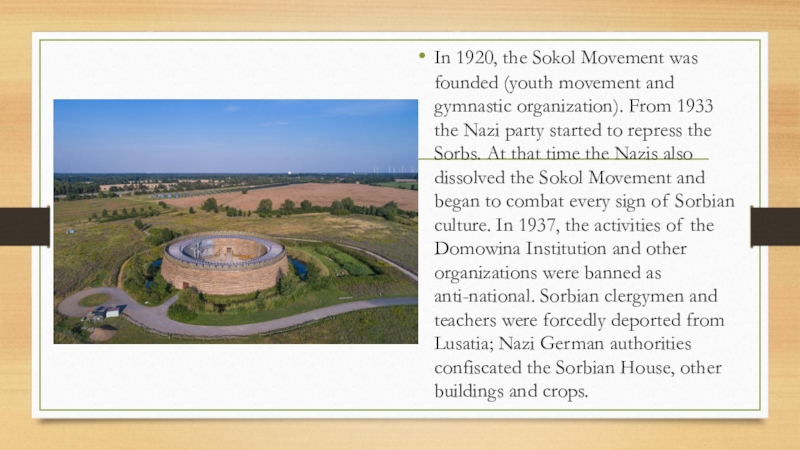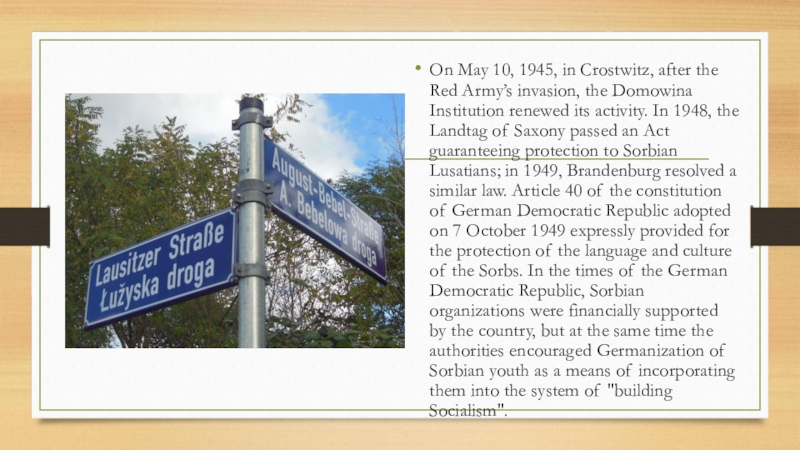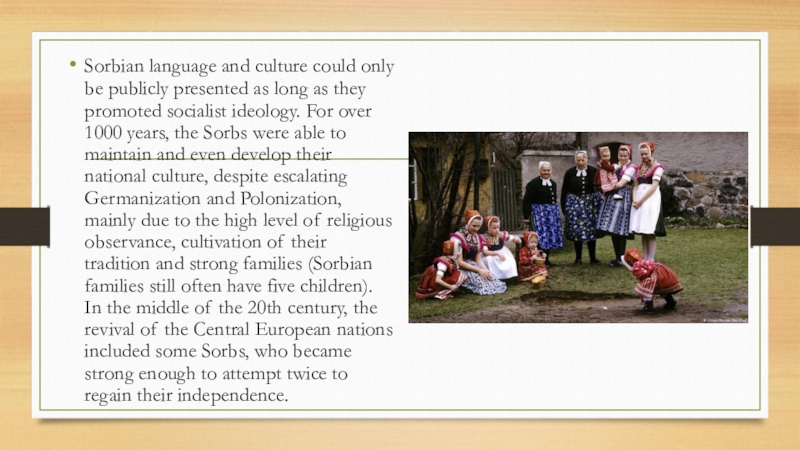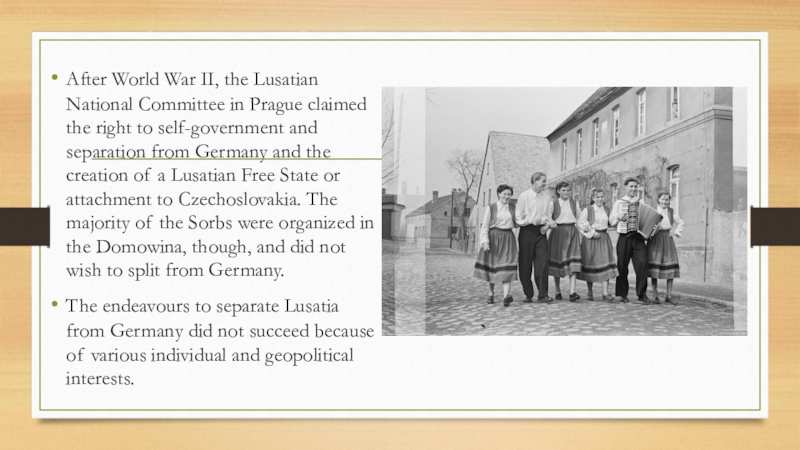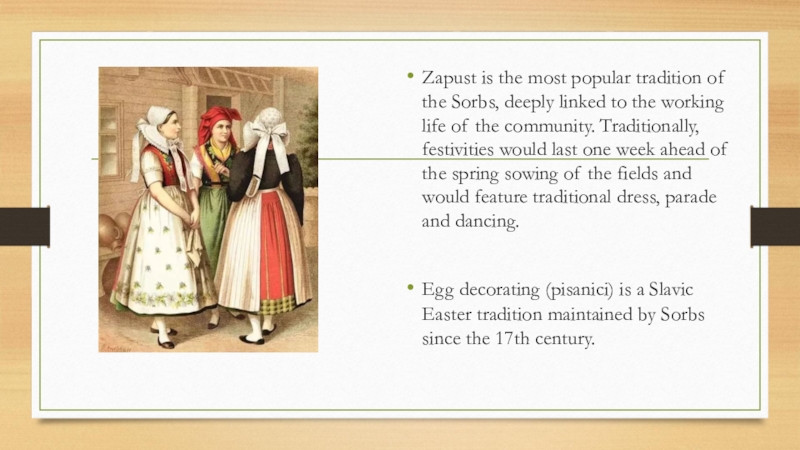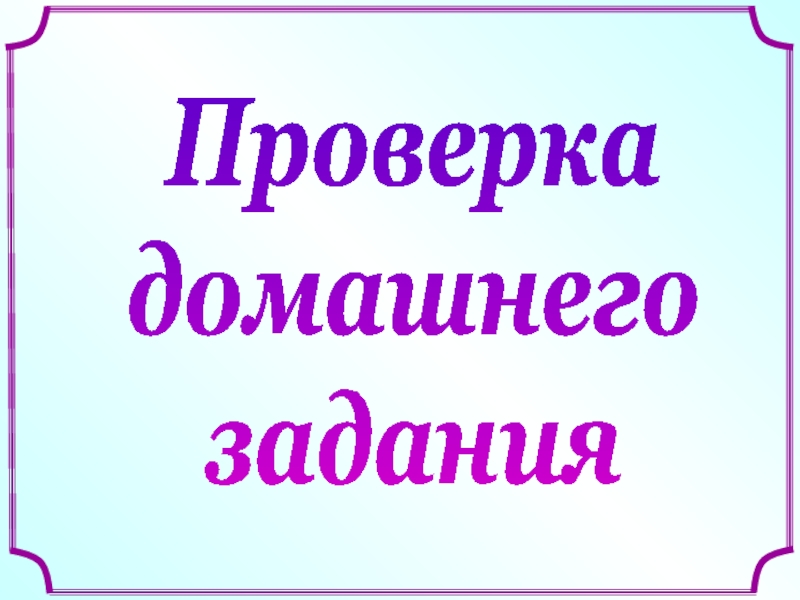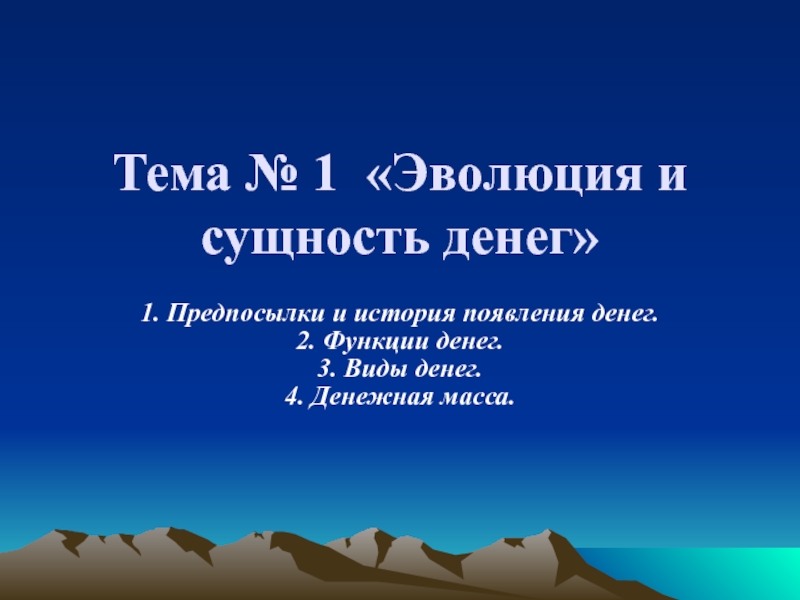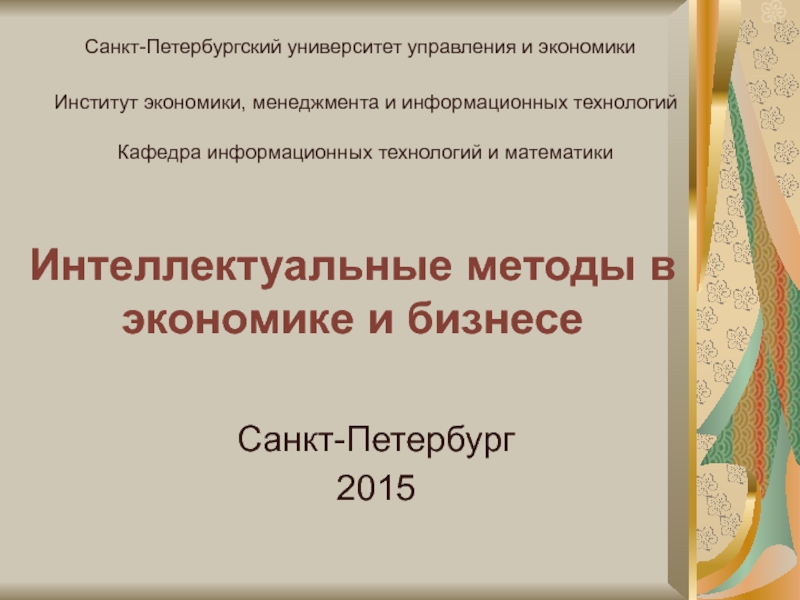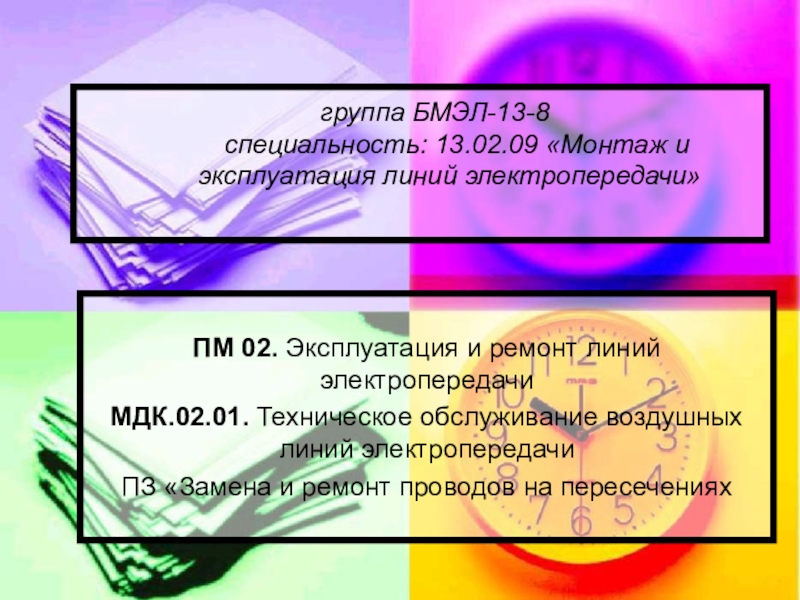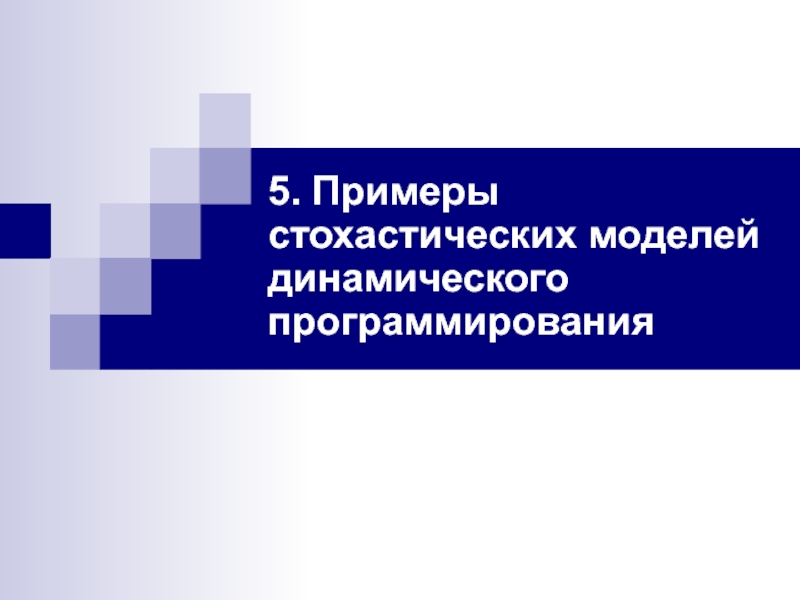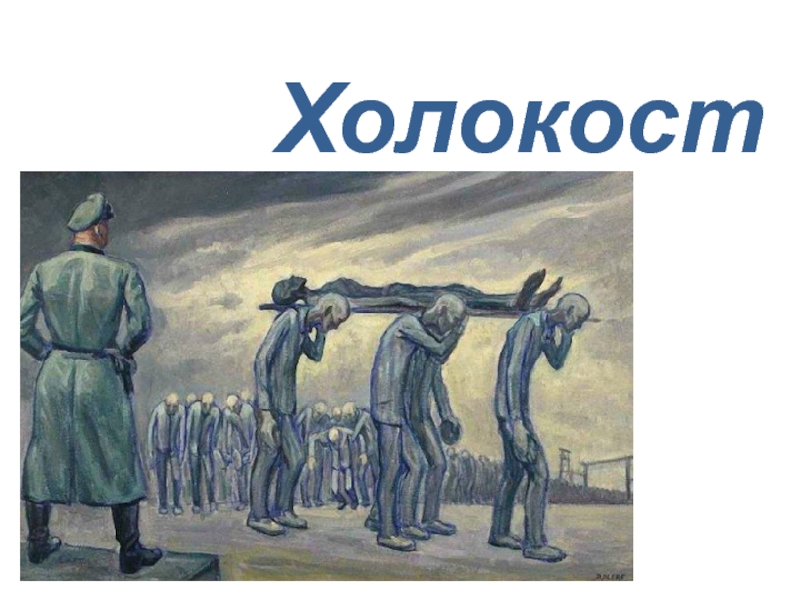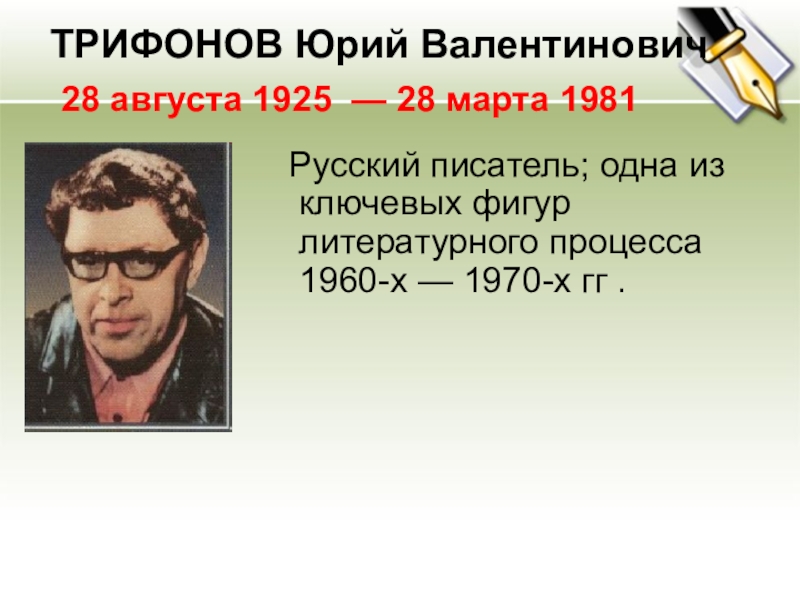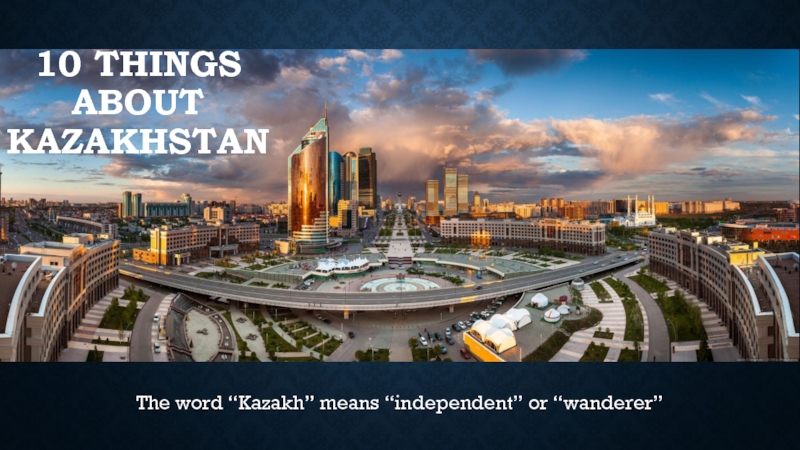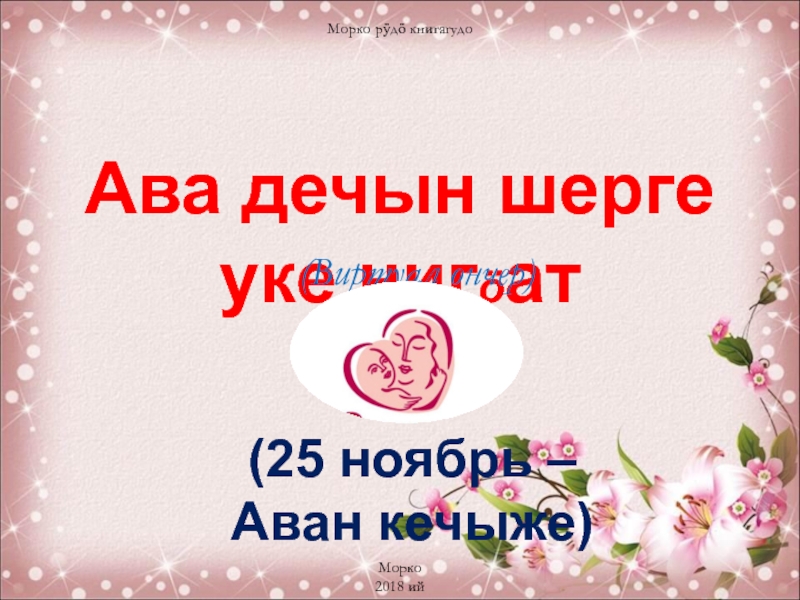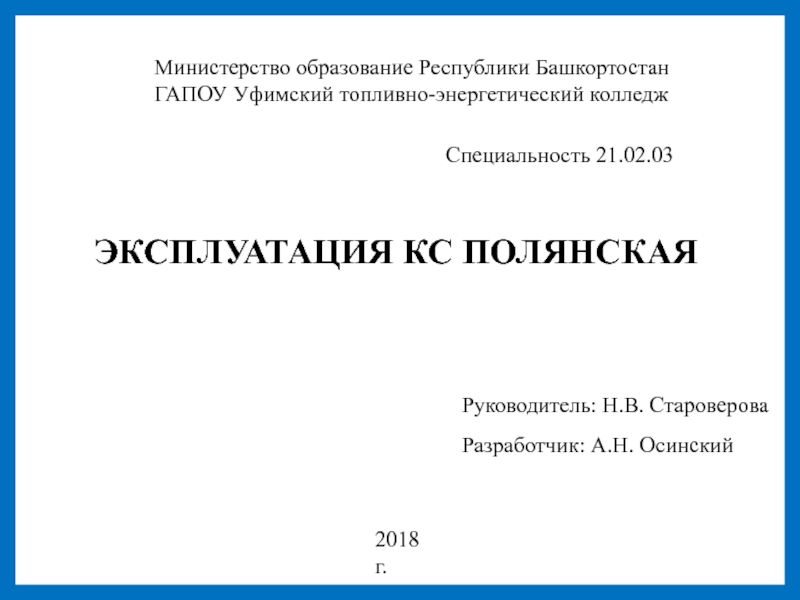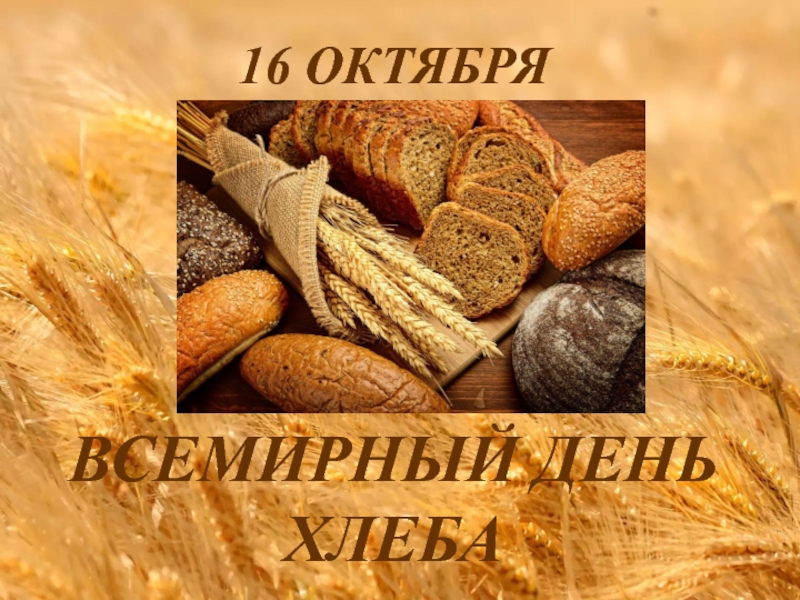Слайд 1Lužice Serbs
Sosonnaya Maria
Varganova Valeriya
Слайд 2Luzhitsky Serbs - the smallest Slavic nation.
Lužice Serbs are the
West Slavic nation.
The population is about 60 thousand people. They
live only in Germany - on the Lusatia territory.
Sorbs - are a West Slavic ethnic group predominantly inhabiting Lusatia, a region divided between Germany (the states of Saxony and Brandenburg) and Poland (the provinces of Lower Silesia and Lubusz). Sorbs traditionally speak the Sorbian languages (also known as "Wendish" and "Lusatian"), closely related to the Polish, Kashubian, Czech and Slovak. Sorbian is an officially recognized minority language in Germany. Sorbs are linguistically and genetically closest to the Czechs and Poles.
Слайд 3Language and culture
The oldest known relic of Sorbian literature originated
in about 1530 – the Bautzen townsmen's oath. In 1548
Mikołaj Jakubica – Lower Sorbian vicar, from the village called Lubanice, wrote the first unprinted translation of the New Testament into Lower Sorbian. In 1574 the first Sorbian book was printed: Albin Mollers’ songbook.
Слайд 4From 1842, the first Sorbian publishing companies started to appear:
the poet Handrij Zejler set up a weekly magazine, the
precursor of today’s Sorbian News. In 1845 in Bautzen the first festival of Sorbian songs took place. In 1875, Jakub Bart-Ćišinski, the poet and classicist of Upper Sorbian literature, and Karol Arnošt Muka created a movement of young Sorbians influencing Lusatian art, science and literature for the following 50 years. A similar movement in Lower Lusatia was organized around the most prominent Lower Lusatian poets Mato Kósyk (Mato Kosyk) and Bogumił Šwjela.
Слайд 5In 1904, mainly thanks to the Sorbs’ contribution, the most
important Sorbian cultural centre (the Sorbian House) was built in
Bautzen. In 1912, the social and cultural organization of Lusatian Sorbs was created, the Domowina Institution - the union of Sorbian organizations. In 1919 it had 180,000 members. In 1920, Jan Skala set up a Sorbian party and in 1925 in Berlin, Skala started Kulturwille- the newspaper for the protection of national minorities in Germany.
Слайд 6In 1920, the Sokol Movement was founded (youth movement and
gymnastic organization). From 1933 the Nazi party started to repress
the Sorbs. At that time the Nazis also dissolved the Sokol Movement and began to combat every sign of Sorbian culture. In 1937, the activities of the Domowina Institution and other organizations were banned as anti-national. Sorbian clergymen and teachers were forcedly deported from Lusatia; Nazi German authorities confiscated the Sorbian House, other buildings and crops.
Слайд 7On May 10, 1945, in Crostwitz, after the Red Army’s
invasion, the Domowina Institution renewed its activity. In 1948, the
Landtag of Saxony passed an Act guaranteeing protection to Sorbian Lusatians; in 1949, Brandenburg resolved a similar law. Article 40 of the constitution of German Democratic Republic adopted on 7 October 1949 expressly provided for the protection of the language and culture of the Sorbs. In the times of the German Democratic Republic, Sorbian organizations were financially supported by the country, but at the same time the authorities encouraged Germanization of Sorbian youth as a means of incorporating them into the system of "building Socialism".
Слайд 8Sorbian language and culture could only be publicly presented as
long as they promoted socialist ideology. For over 1000 years,
the Sorbs were able to maintain and even develop their national culture, despite escalating Germanization and Polonization, mainly due to the high level of religious observance, cultivation of their tradition and strong families (Sorbian families still often have five children). In the middle of the 20th century, the revival of the Central European nations included some Sorbs, who became strong enough to attempt twice to regain their independence.
Слайд 9After World War II, the Lusatian National Committee in Prague
claimed the right to self-government and separation from Germany and
the creation of a Lusatian Free State or attachment to Czechoslovakia. The majority of the Sorbs were organized in the Domowina, though, and did not wish to split from Germany.
The endeavours to separate Lusatia from Germany did not succeed because of various individual and geopolitical interests.
Слайд 10Zapust is the most popular tradition of the Sorbs, deeply
linked to the working life of the community. Traditionally, festivities
would last one week ahead of the spring sowing of the fields and would feature traditional dress, parade and dancing.
Egg decorating (pisanici) is a Slavic Easter tradition maintained by Sorbs since the 17th century.
